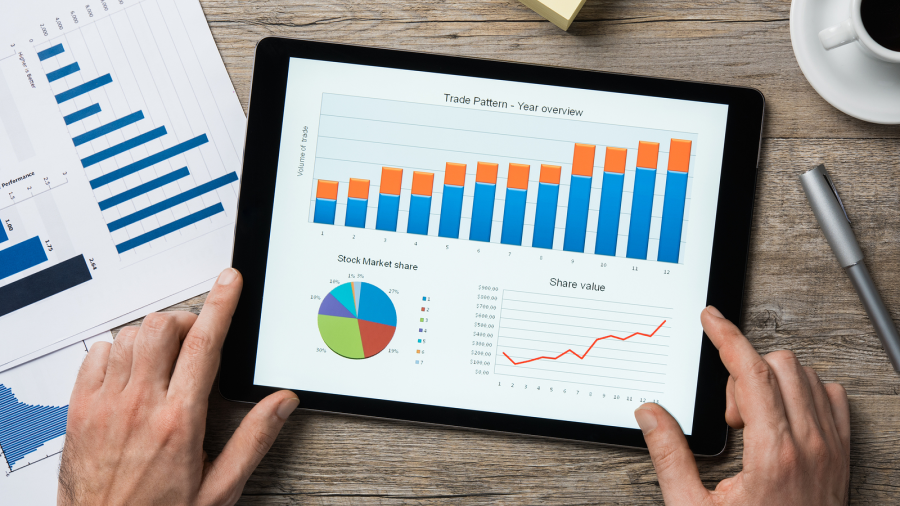Personal Wealth Management / Market Analysis
Separate Your Equity Market Views
In our view, investors should bear in mind that markets generally don’t move in lockstep with economic and medical data.
Following awful returns in 2020’s first quarter, equities started Q2 on a rocky note as investors seemingly reckoned with the American government’s grim COVID-19 projections, the UK’s mounting casualty rate and revelations that testing in Britain lags other European nations.[i] Even as fresh data showed infection rates slowing in badly hit Italy and Spain, the large numbers of forecasted deaths elsewhere may have understandably hit sentiment.[ii] We will leave it to the epidemiologists to assess whether the latest projections are likely to prove accurate as social distancing protocols remain in place for the foreseeable future. As ever, our concern is capital markets and our readers’ financial futures. To that end, we offer a simple piece of counsel: To navigate markets at this juncture, we think it is vital for investors seeking long-term growth to mentally separate the disease, containment efforts’ economic impact, and equity markets. The three are unlikely to move in lockstep, in our view, with equities likely to improve before the other two.
Because this bear market materialised with record-breaking speed, it can be hard to see that markets actually worked as our research shows they usually do, pricing in the near future before the facts on the ground confirmed it.[iii] World stocks peaked on 20 February.[iv] At the time, there were relatively few confirmed cases in America and Europe. No developed nations were officially on lockdown yet, and few major events had been cancelled. Just over three weeks later, on 12 March, the MSCI World Index officially crossed into bear market territory (a decline of greater than -20% from an index high point).[v] By then, Italy was mostly locked down, whilst America and most other nations were curbing mass gatherings. Concerts, festivals, sporting events and other major gatherings were cancelled, but businesses were still open and American state governments hadn’t yet begun ordering residents to cease all non-essential activity and stay at home. Those orders began taking the following week, starting in California on St. Patrick’s Day and then eventually spreading to the East Coast. At the same time, the UK government was gradually ratcheting up its own “social distancing” guidelines, culminating in the wide-ranging restrictions announced 23 March. The following day, the developed world received its first round of data confirming a deep economic contraction had begun: IHS Markit’s Flash Purchasing Managers’ Indexes for March.[vi] Yet as we write, global markets’ lowpoint to date was 16 March.[vii] Equities approached that low again on 23 March, but they rose through the month’s end.[viii] We have no idea if this will hold, which will only be clear in hindsight. But that isn’t our point here. In our view, equities downdraft preceding economic data is compelling evidence that equity markets move before the economy.
This is why we think it is critical, if challenging, to separate medical statistics and projections out of your equity market analysis. For instance, we have seen the big numbers in the American government’s projections on Wednesday morning used in other communications from the medical community and mainstream news outlets for the past couple weeks. They may be new to an official government slideshow, but they are likely not new to investors. Because they were public, we think it stands to reason that people have been buying and selling for several days with knowledge of these numbers, registering their opinions about them. Hence, we suspect they are already reflected in equity prices, alongside the initial sharp economic contraction stemming from the efforts to contain them.
Our viewpoint isn’t based on mere theory. We think Chinese equity markets provide strong evidence. Mainland Chinese equities had a sharp setback in late January, as the national pandemic became apparent. Between 13 January and 3 February—a stretch that included the week-long Lunar New Year holiday—the Shanghai Composite fell -11.8% in renminbi (to omit skew from currency fluctuations).[ix] But then it had a sharp V-shaped recovery, getting close to breakeven by 21 February.[x] This, despite the fact that the number of cases under treatment didn’t peak until 17 February.[xi] The total death count was just 425 on 3 February.[xii] On 21 February, it was 2,345.[xiii] The mounting evidence of a humanitarian tragedy apparently didn’t stop equity markets. Now, Chinese shares have since taken another turn down.[xiv] But this seems to us much more like collateral damage from plunging Western demand on Chinese factories and exporters.
We think developed-world equity markets are exceedingly likely to also rebound well before any improvement in medical or economic data is evident. We understand the temptation to look to infection rates for some hint as to when containment efforts will cease and businesses reopen, but we don’t think they will be any help to investors. The number of positive tests is likely to skyrocket in the coming days if for no other reason than this basic one: Testing is becoming more widely available in America. For the past few weeks, it appears mostly extremely ill Americans were tested, leading many medical experts interviewed in news coverage to conclude true infection rates were vastly underreported. As testing becomes more widespread, we are likely to get a much more accurate read. That likely complicates getting an accurate view of the trends.
But, regardless, equities rebounded in China long before COVID-19 was contained there. The recovery started whilst migrant workers were still quarantined in their hometowns, major metropolises were ghost towns and factories nationwide were shut. Markets appeared to see subconsciously what most people seemingly failed to fathom—that life would soon slowly begin returning to normal. A hypothetical mainland investor who sold during the post-New Year panic and then waited for confirmation of quarantines ending before reinvesting would have missed an initial rebound. So, in our view, would a hypothetical investor awaiting economic data showing China is fully up and running. That is an example of waiting for clarity, which market history shows carries an extremely lofty price tag in investing. Only by remembering that markets generally work as leading indicators—and compartmentalising headlines with dreadful medical and economic news—would our hypothetical mainland Chinese investor have navigated that stretch successfully.
We encourage people here to do the same now. Logic dictates that medical statistics will surely—and tragically—get worse from here. It is hard, but try putting them in one imaginary bucket. Then put all the dreadful economic news and corporate earnings in another bucket. Label it “reasons equity markets already fell.” Then, in your last bucket, place equities. Label that bucket “leading indicator.” Remember that label, so that when equity markets swing, you can remember they are hinting at what the economy is likely to do, not what it has already done. Remember that whilst no one can predict the precise day it happens, equities will likely tell us life is going to get better well before we actually feel and see that improvement in the real world around us.
[i] “Coronavirus: Testing Will ‘Unlock Puzzle,’ PM Says,” Staff, BBC News, 2 April 2020.
[ii] “Coronavirus: Spain’s Deaths Pass 9,000 as Infection Rate Slows,” Staff, BBC News, 1 April 2020.
[iii] Source: FactSet, as of 1/4/2020. Statement based on MSCI World Index returns with net dividends, 31/12/1969 – 31/3/2020.
[iv] Source: FactSet, as of 1/4/2020. Statement based on MSCI World Index returns with net dividends.
[v] Ibid.
[vi] Source: IHS Markit, as of 24/3/2020.
[vii] See Note iv.
[viii] Ibid.
[ix] Source: FactSet, as of 1/4/2020. SSE Composite Index price return in Chinese renminbi, 13/1/2020 – 3/2/2020. Currency conversions between the renminbi and pound may result in higher or lower investment returns.
[x] Ibid. SSE Composite Index price return in Chinese renminbi, 3/2/2020 – 21/2/2020. Currency conversions between the renminbi and pound may result in higher or lower investment returns.
[xi] Source: China National Health Commission, as of 1/4/2020.
[xii] Ibid.
[xiii] Ibid.
[xiv] Source: FactSet, as of 1/4/2020. Statement based on SSE Composite Index price return in Chinese renminbi. Currency conversions between the renminbi and pound may result in higher or lower investment returns.
Get a weekly roundup of our market insights.
Sign up for our weekly e-mail newsletter.

See Our Investment Guides
The world of investing can seem like a giant maze. Fisher Investments UK has developed several informational and educational guides tackling a variety of investing topics.




